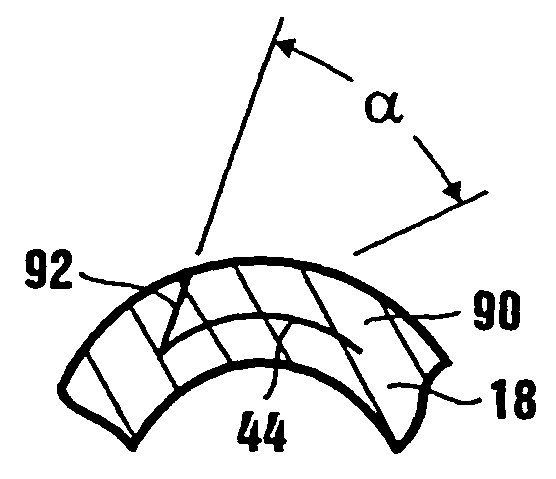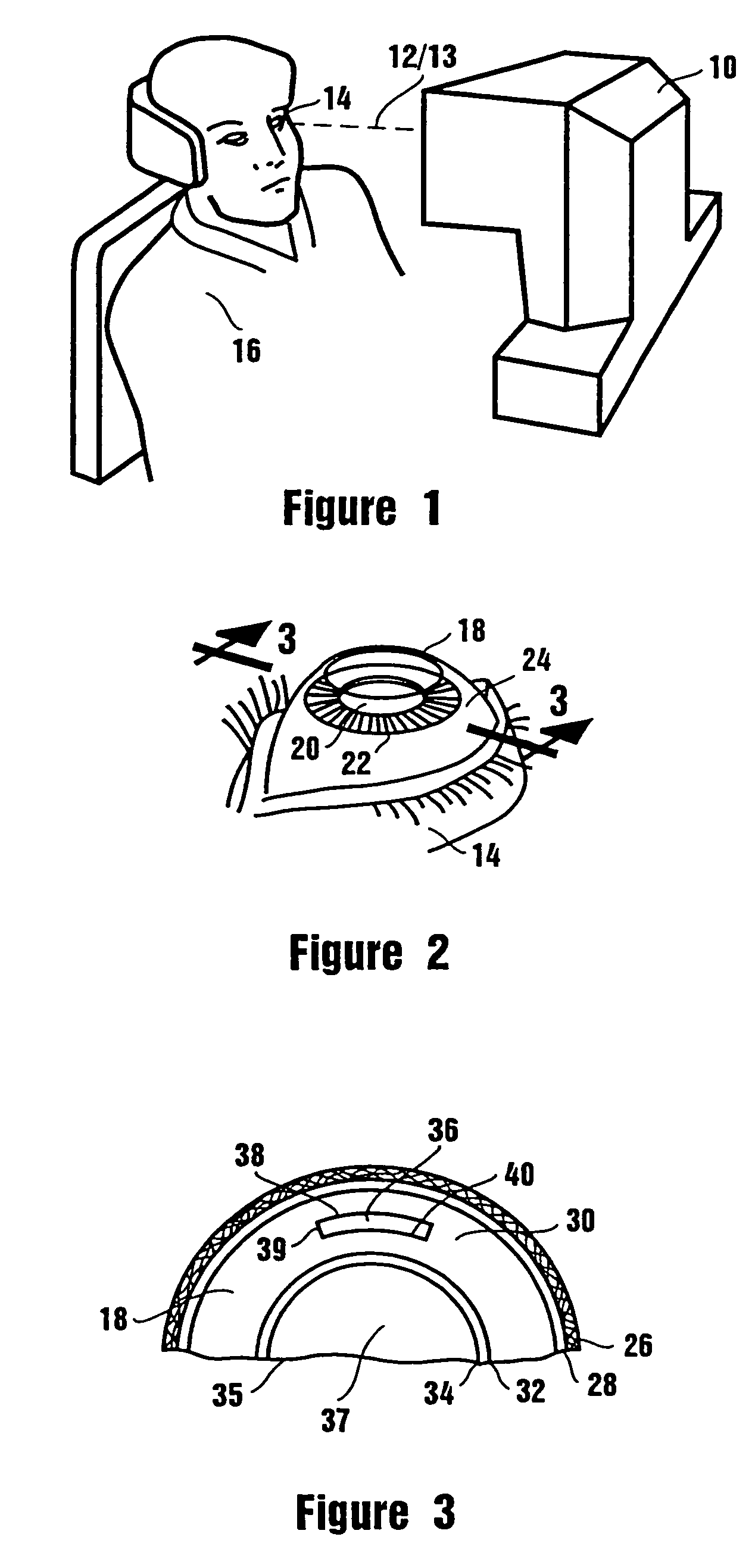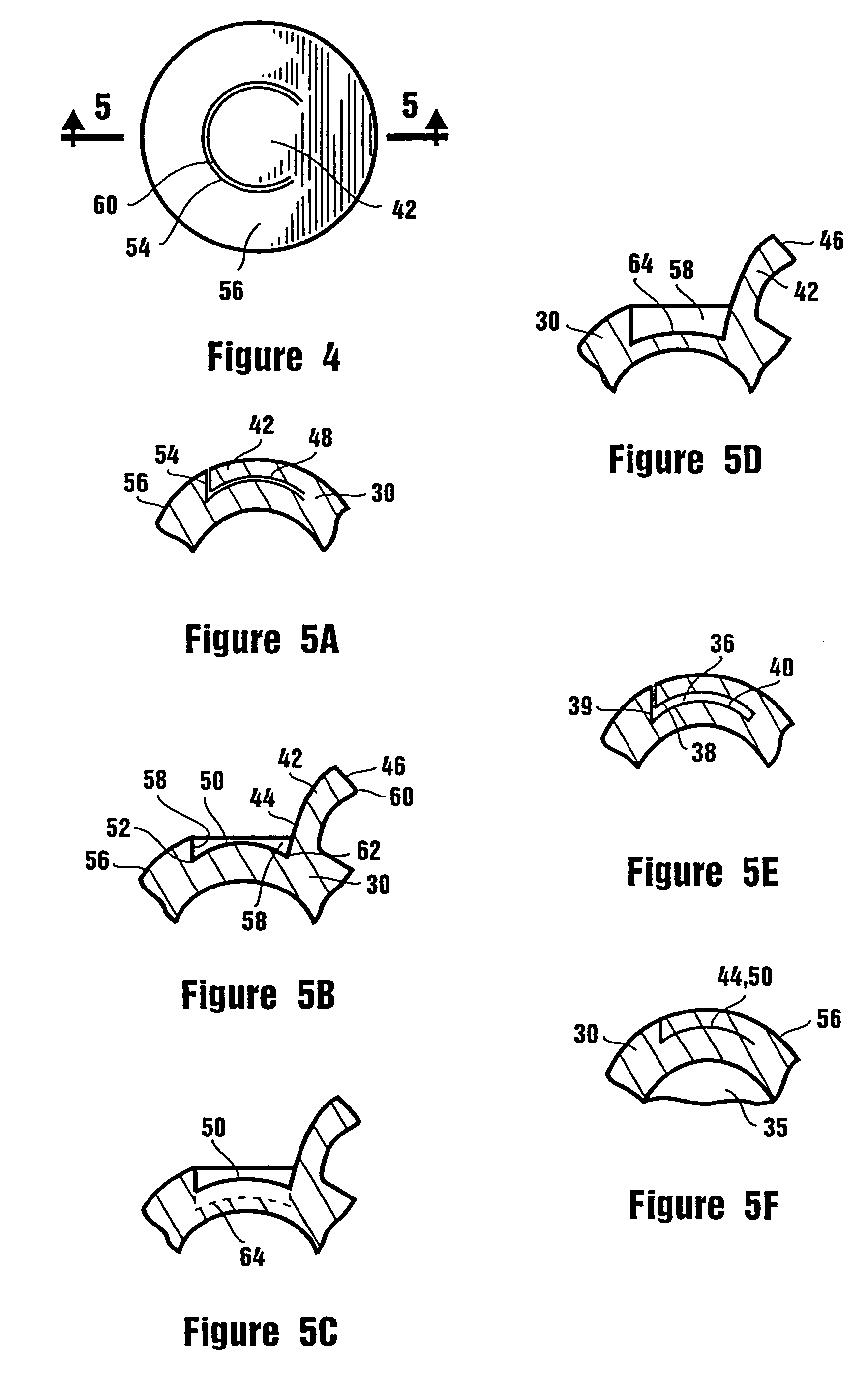Method of corneal surgery by laser incising a contoured corneal flap
a corneal flap and laser incision technology, applied in the field of ophthalmic surgery, can solve the problems of limiting the configuration of simple flaps, affecting the appearance of the cornea, so as to achieve the effect of correcting the vision deficiency of the patien
- Summary
- Abstract
- Description
- Claims
- Application Information
AI Technical Summary
Benefits of technology
Problems solved by technology
Method used
Image
Examples
Embodiment Construction
[0007]In accordance with the present invention, a method for corneal laser surgery includes the step of first prescribing the size, shape and location of stromal tissue which needs to be removed in order to correct the vision deficiency of a patient. This volume of stromal tissue which is to be removed is generally in the form of a lentoid that is defined by an anterior surface and a posterior surface and may contain an annular surface. In general, the surfaces of the lentoid can be either plane, convex, concave or irregular. In the method of the present invention, a contoured corneal flap having an interior surface and a peripheral edge is created wherein the interior surface of the flap is shaped to conform to the anterior surface of the prescribed lentoid.
[0008]To create the contoured corneal flap, a pulsed laser beam is focused to a preselected start point within the stromal tissue. In accordance with preplanned procedures, the focal point will be located on the intended interio...
PUM
 Login to View More
Login to View More Abstract
Description
Claims
Application Information
 Login to View More
Login to View More - R&D
- Intellectual Property
- Life Sciences
- Materials
- Tech Scout
- Unparalleled Data Quality
- Higher Quality Content
- 60% Fewer Hallucinations
Browse by: Latest US Patents, China's latest patents, Technical Efficacy Thesaurus, Application Domain, Technology Topic, Popular Technical Reports.
© 2025 PatSnap. All rights reserved.Legal|Privacy policy|Modern Slavery Act Transparency Statement|Sitemap|About US| Contact US: help@patsnap.com



